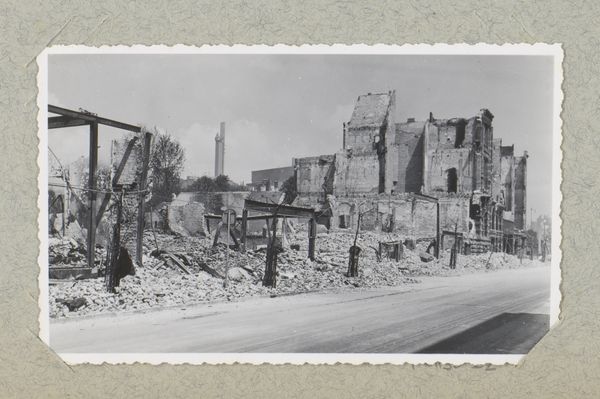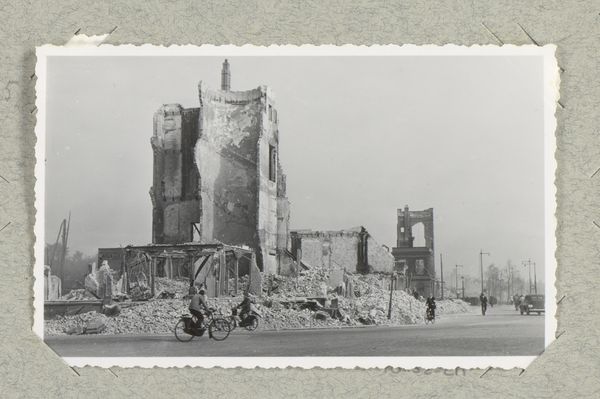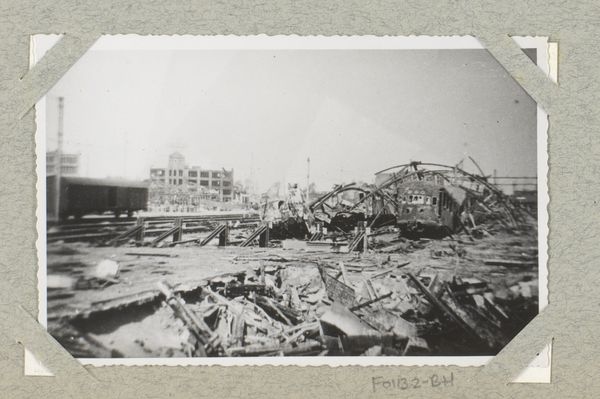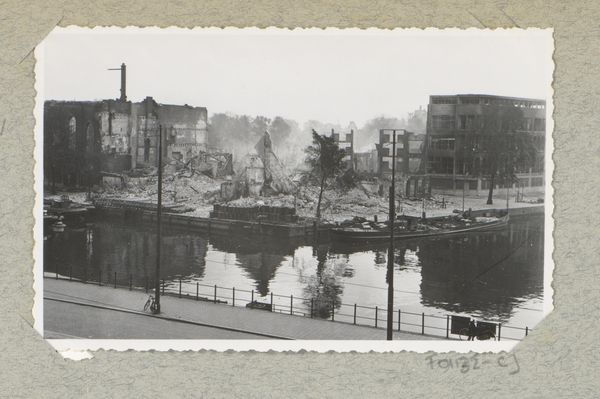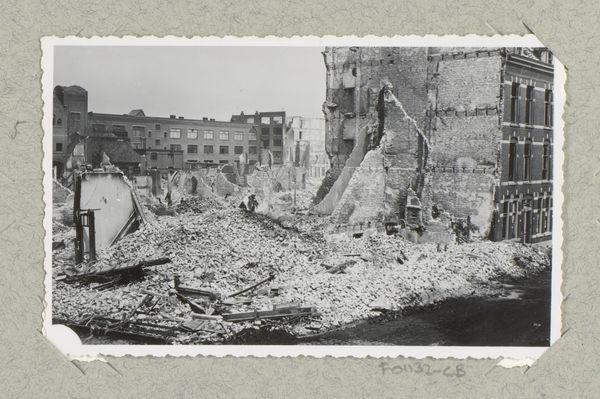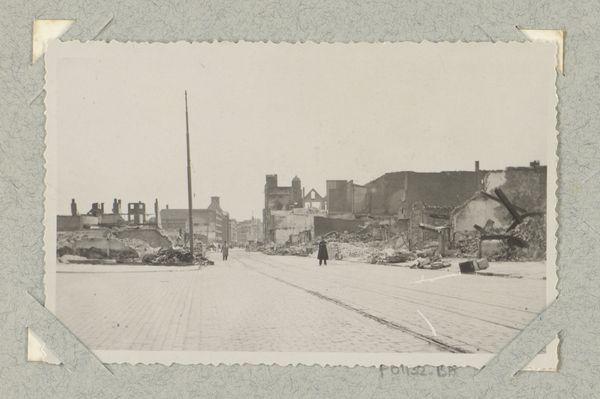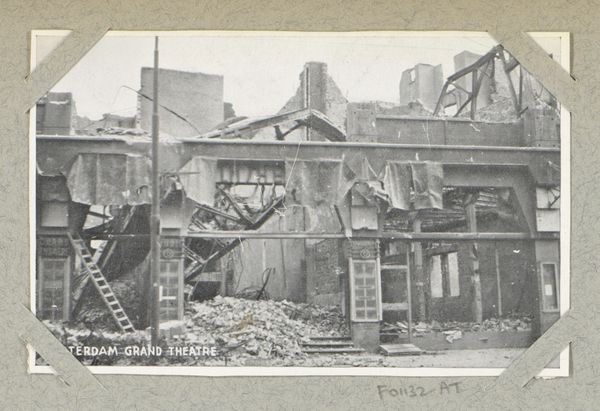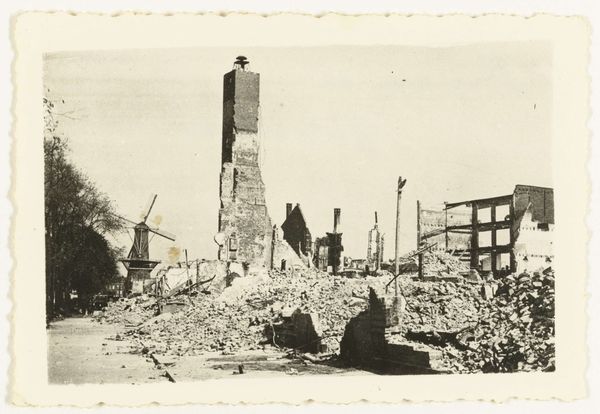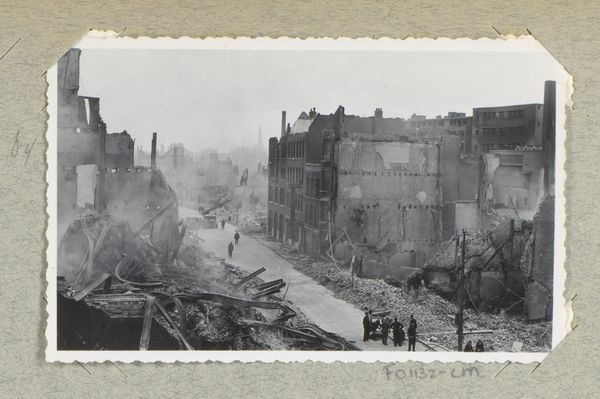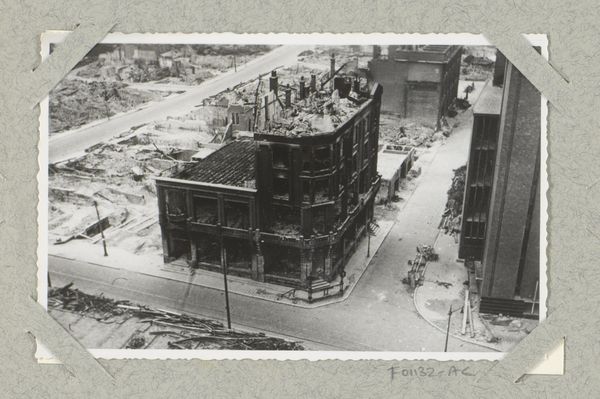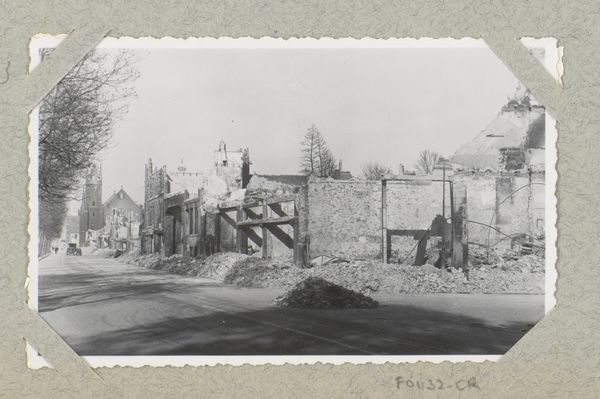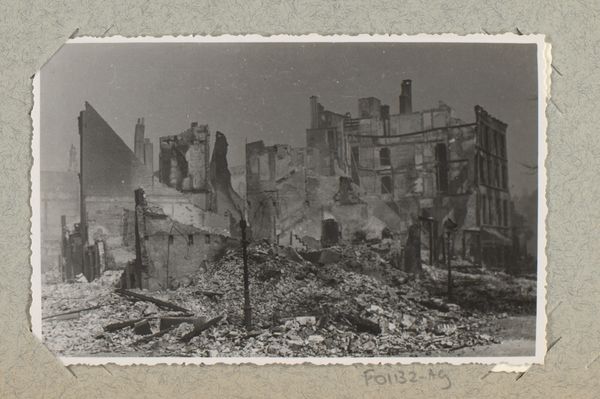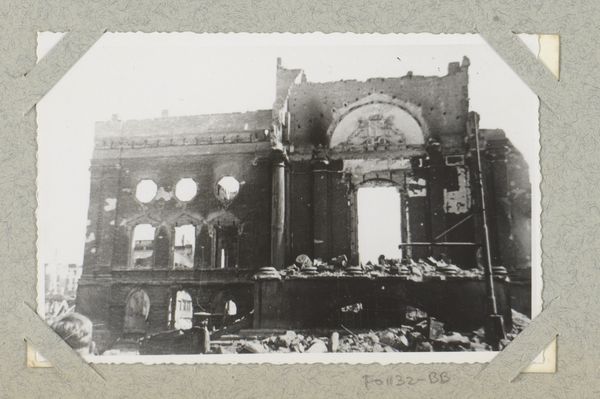
Dimensions: height 88 mm, width 136 mm
Copyright: Rijks Museum: Open Domain
Curator: This photograph by J. Nolte, captured between 1940 and 1945, presents the ruins at Leuvehaven and Eenhoornstraat in Rotterdam. It's a gelatin silver print, part of a larger documentary effort to record the wartime destruction. Editor: The immediate feeling is one of desolation. The photograph's monochromatic palette intensifies the scene's gravity; piles of rubble dominate the frame, punctuated by ghostly, skeletal buildings and the barest hint of human figures in the lower part. It's stark. Curator: It certainly is. The image captures the scale of destruction after the Rotterdam Blitz in May 1940, a pivotal event during the German invasion of the Netherlands. Nolte’s work, as well as other photos from that period, show us how civilian spaces became war zones overnight. Editor: I'm struck by the street lamp in the middleground. Its lonely presence suggests an eerie stillness amidst the chaos. It's almost mocking; a relic of normalcy refusing to be entirely erased. And what about the witnesses present in the photo's lower-left? Are they mourners, investigators, or just ordinary people passing through, carrying on? Curator: That streetlight certainly symbolizes disrupted societal order and civic abandonment. And those people visible on the photo's left represent the resilience of the inhabitants. The picture acts as a grim testament to urban warfare. I wonder if Nolte sought to evoke pathos and collective memory through the placement of everyday subjects like the passersby juxtaposed with this devastation. Editor: Exactly. I feel like Nolte’s image goes beyond documentation. The desaturated tones create this atmosphere of almost unbearable loss. It's a study of devastation but also subtly emphasizes a need to rebuild—not just physical structures but also a collective spirit. We have to think about the ethical responsibility of showing devastation; Nolte manages to do that sensitively by framing everyday folks on the scene to help guide the viewer. Curator: Agreed. By turning this painful moment into a historical visual document, the photographer underscored the magnitude of social, cultural, and political consequences. The urban ruin became a new kind of landscape painting that challenged earlier ideals of progress and national identity. Editor: Absolutely. Nolte provides not just evidence of atrocity but also serves as a mirror for societal introspection in those specific circumstances and, even further, an understanding of trauma and reinvention for a world at war. Curator: Yes, and this artwork reminds us how photography played a role not just in archiving an event, but creating one in collective memory and cultural record. Editor: Exactly. It's a heavy picture that urges dialogue beyond art and moves us into difficult, but crucial social issues that demand discussion.
Comments
No comments
Be the first to comment and join the conversation on the ultimate creative platform.
